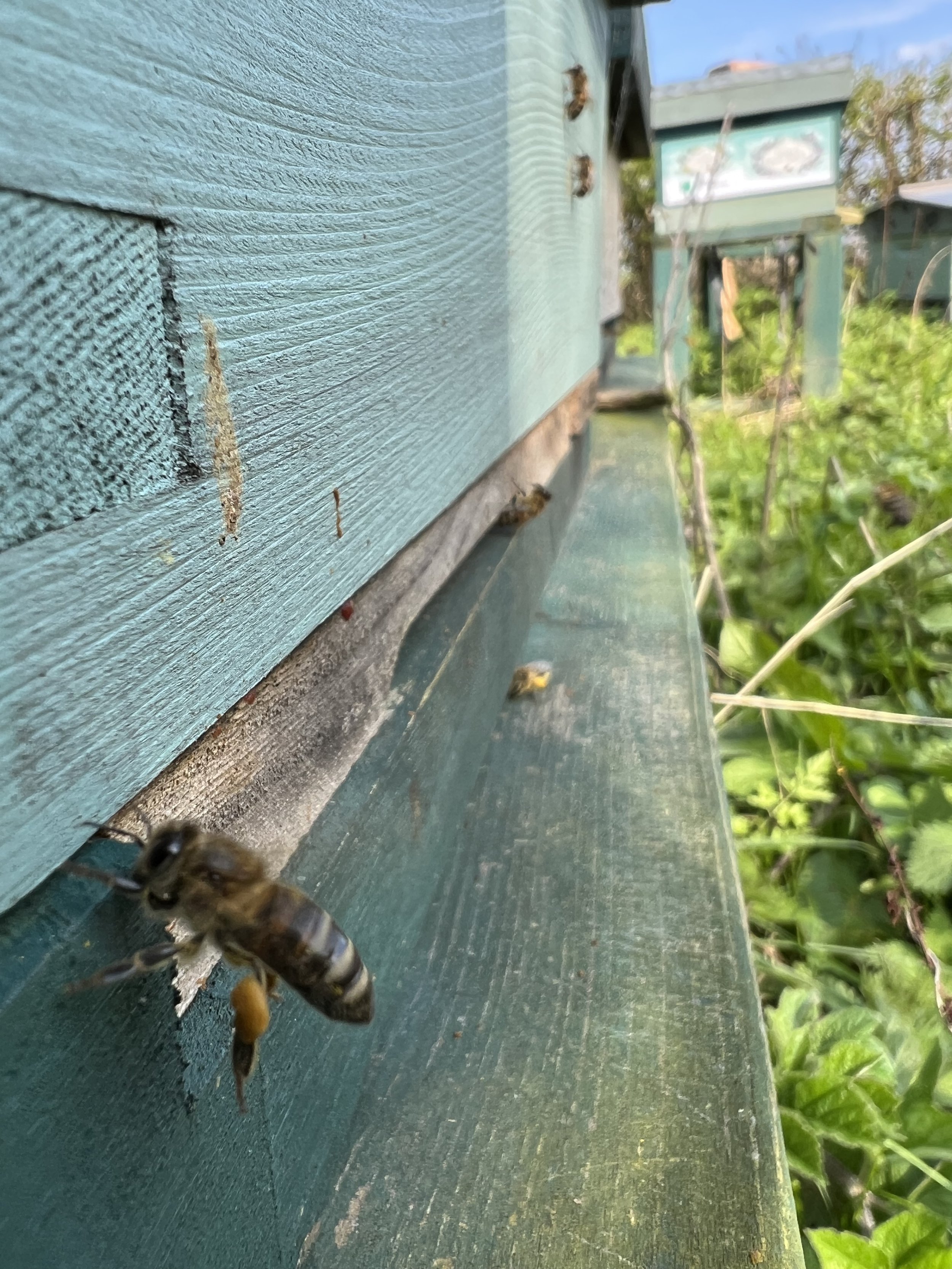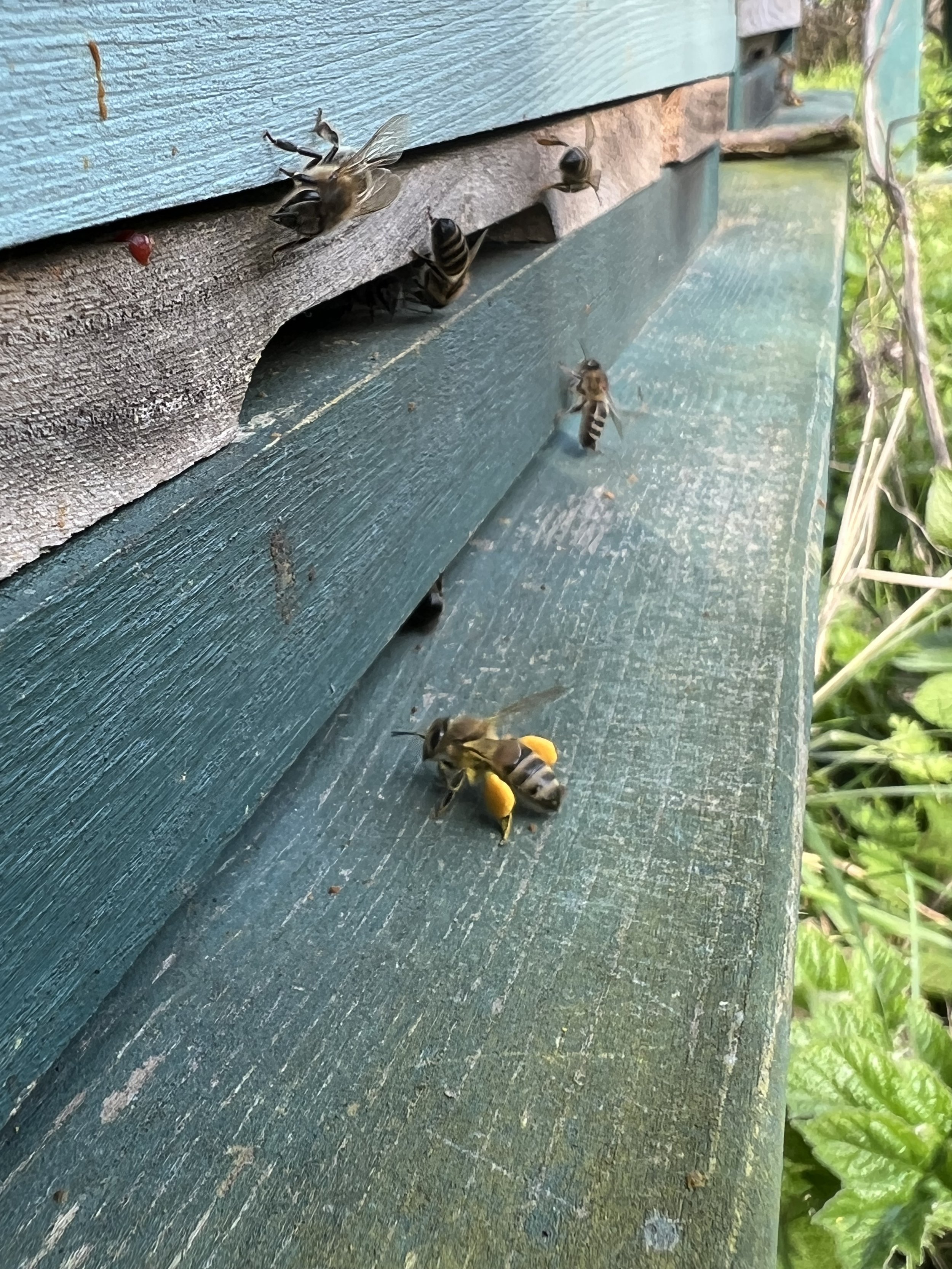Bee-ing Patient
As winter turns to spring the days get longer and usually brighter too, there are the odd days when the bees will start flying - first performing cleansing flights (relieving themselves after having crossed their legs for potentially months), then as the blossoms, catkins and bulbs come to life they collect the pollen and nectar. For the beekeeper this is an exciting time, full of potential and some worry too.
This year we’ve seen a milder winter, as seems to becoming the norm, but along the way there have been some severe cold snaps. This can be dangerous for the bees. Let me give you an example.
It’s February, the sun rises and there is ice on the ground but by mid-morning the sun is shining and although it’s not sunbathing weather it’s perhaps 8 or 9 degrees, the bees start to fly but as the day progresses and the sun moves out of sight, the temperature drops quickly and by nightfall we’re down to freezing point again and overnight even colder. For the bees this is going to be hard work; they keep their central nest at around 35 degrees when they have brood (bee eggs and larvae), their central heating system is them and the harder they work to create heat, the more energy they use, so the more food they need, these spring days there isn’t much food about and it’s too cold for them to convert nectar into honey so the beekeeper’s job is to make sure their food stores are supplemented if required. With the temperature dropping so quickly this could also mean the colony can’t get back into it’s huddle and heating quickly enough, if this happens then they can die of the cold. There are other factors too but I won’t go into everything in detail.
What this means is that the early part of winter isn’t really a worry, it’s when we get to the fake spring part of winter that things can start to go awry and colonies can be lost. This year I sadly lost two colonies during this period. There’s so much disappointment when this happens, you work hard to help them survive but sometimes nothing can be done. There is a theory that you would only want your strong colonies to survive anyway - survival of the fittest - as otherwise you’d be propping them up throughout the year, but it’s still hard to open a hive and find them all dead. I’ve heard a lot of beekeepers are experiencing big losses this year, let’s hope we can find better ways through our new winters for the bees. I can’t help but feel that less interference by us and a leaning towards more natural beekeeping ways, certainly leaving more honey, will be the way forward. The bees have been around for millions of years and us humans aren’t doing a good job of interfering with nature really are we!
First Check
So now it’s April. The nights are still cold but the daytime temp’s are starting to become a little more consistent. The bees are flying and a lot can be garnered by watching at the hive entrance. I was observing a hive the other day and they looked like they were getting ready to swarm as there was so much activity out the front, seemingly a few hundred bees hovering around the entrance. They’re not swarming though; they’re the new bees that are doing their orientation flights - mapping out home. A great sign as it means the queen is laying and the colony is growing.
After watching pollen laden bees and checking the temperatures I decided that a quick check was safe. We’re not in full inspection mode yet, remember that 35 degrees - if I open the hive at 12 degrees to check then they need to warm the hive up once I’m finished. These checks are quick progress checks by observing the entrance and a quick look under the crown board (their ceiling) to see if they have enough space and to get a general feel for their health. Proper checks won’t start until mid-late April when the weather is more consistently “shirt sleeve weather”.
With my new pink handled hive tool at the ready and smoker lit just in case it was required, I quickly but calmly removed the roof, checked if they had enough food, checked that the bees looked happy and busy before gauging whether they had enough room; if not I added a box on top that will give them space and hopefully slow down any urges to swarm.
As usual the checks were a mixed bag. Some colonies were thriving and ahead of the game, others were just getting started and a couple had died. Thankfully only one colony was a little annoyed at seeing me and on opening the hive lid headed straight out towards me, shouting at me! They’ve always been a little less on the friendly side and are more noise and bluster than harm so I asked them nicely to return home and I would in turn leave them alone!
It was nice to be in my bee suit again, although not the most attractive or comfortable of outfits, putting it on does seem to put me into a nice frame of mind. Not long now until my days are surrounded with clouds of bees…





